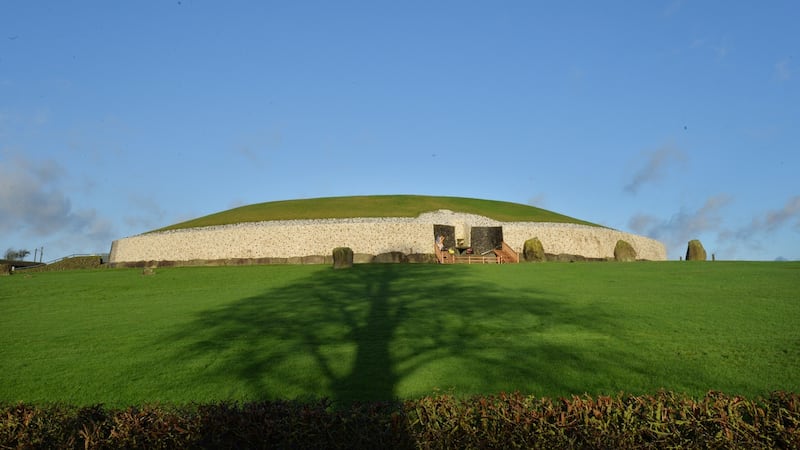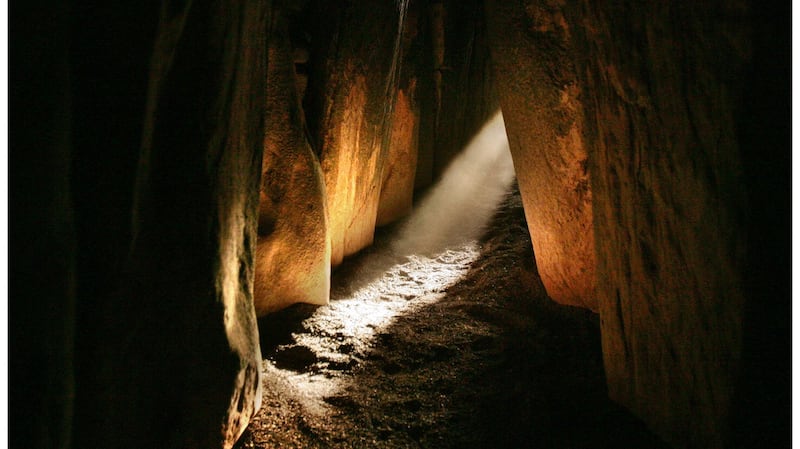The genetic make-up of an adult male buried in the heart of the ancient Newgrange passage tomb indicates he was among a ruling social elite and in-bred in a similar way to Inca god-kings and Egyptian pharaohs.
This remarkable discovery shedding new light on the earliest periods of Ireland's human history has been made by archaeologists and geneticists led by a team in Trinity College Dublin. Their genetic analysis shows he was born as a consequence of first-degree incest.

Older than the pyramids, Newgrange passage tomb in Co Meath is world famous for its annual solar alignment where the winter solstice sunrise illuminates its sacred inner chamber in a golden blast of light. However, little is known about who was interred in the heart of this imposing 200,000-tonne monument or of the Neolithic society which built it more than 5,000 years ago.

The survey of ancient Irish genomes using DNA sequencing technology on bone samples suggests a man who had been buried in this chamber belonged to a dynastic elite, according to Dr Lara Cassidy of TCD, lead author of the research published by Nature scientific journal on Wednesday.
“I’d never seen anything like it,” she said. “We all inherit two copies of the genome, one from our mother and one from our father. This individual’s copies were extremely similar, a tell-tale sign of close inbreeding. In fact, our analyses allowed us to confirm that his parents were first-degree relatives.”
Matings of this type (such as brother-sister unions) are a near universal taboo for cultural and biological reasons. “The only confirmed social acceptances of first-degree incest are found among the elites – typically within a deified royal family,” Dr Cassidy explained.
By breaking the rules, the elite separates itself from the general population, intensifying hierarchy and legitimising power. “Public ritual and extravagant monumental architecture often co-occur with dynastic incest, to achieve the same ends,” she added.
‘Elite burial sites’
"Here the auspicious location of the male skeletal remains is matched by the unprecedented nature of his ancient genome," said professor of population genetics at TCD Dan Bradley.
“The prestige of the burial makes this very likely a socially sanctioned union and speaks of a hierarchy so extreme that the only partners worthy of the elite were family members.”
The team also unearthed a web of distant familial relations between this man and others from sites of the passage tomb tradition across the country, namely the "mega-cemeteries" of Carrowmore and Carrowkeel in Co Sligo, and the Millin Bay monument in Co Down.
“It seems what we have here is a powerful extended kin-group, who had access to elite burial sites in many regions of the island for at least half a millennium,” Dr Cassidy said.
The monument builders were early farmers who migrated to Ireland and replaced hunter-gatherers who preceded them.
Remarkably, a local myth resonates with these results and the Newgrange solar phenomenon. First recorded in the 11th century AD, four millennia after construction, the story tells of a builder-king who restarted the daily solar cycle by sleeping with his sister. The Middle Irish place name for the neighbouring Dowth passage tomb – Fertae Chuile – is based on this lore and can be translated as “Hill of Sin”.
“Given the world-famous solstice alignments of Brú na Bóinne, the magical solar manipulations in this myth already had scholars questioning how long an oral tradition could survive,” said Dr Ros Ó Maoldúin, an archaeologist on the study. “To now discover a potential prehistoric precedent for the incestuous aspect is extraordinary.”
The genome survey has unearthed other unexpected results. Within the oldest known burial structure on the island, Poulnabrone portal tomb, the earliest yet diagnosed case of Down Syndrome was discovered in a male infant who was buried there 5,500 years ago. Isotope analyses suggest the infant was breast-fed.
It was conducted in collaboration with researchers at University College London; NUIG, UCC, University of Cambridge, Queen's University Belfast, Sligo IT and the National Monuments Service – with support from the National Museum of Ireland and National Museums Northern Ireland.















